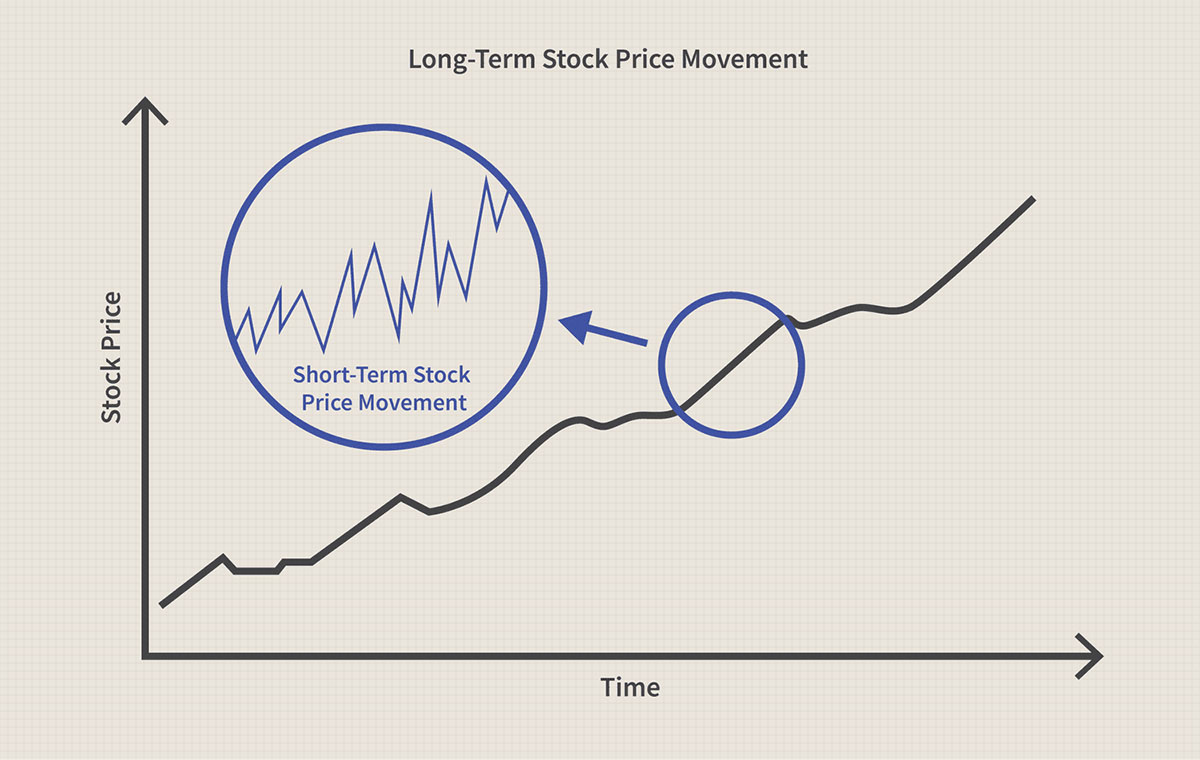

Finance
How Do Points Work In The Stock Market
Published: November 24, 2023
Learn how points work in the stock market and the impact they have on your investments. Explore this comprehensive guide to finance and gain a deeper understanding.
(Many of the links in this article redirect to a specific reviewed product. Your purchase of these products through affiliate links helps to generate commission for LiveWell, at no extra cost. Learn more)
Table of Contents
Introduction
Welcome to the world of the stock market, where numbers and data hold significant sway over the financial landscape. As you begin your journey into understanding the intricacies of the stock market, you may come across the term “points.” In this article, we will delve into how points work in the stock market and why they are vital for investors and traders alike.
Points are a common unit of measurement used in the stock market to quantify changes in stock prices or movements in stock market indices. They provide a snapshot of the market’s performance and assist investors in tracking trends and making informed decisions.
At its core, the stock market is a platform where shares of publicly traded companies are bought and sold. These shares’ prices are influenced by various factors, including company performance, market sentiment, and economic conditions.
Stock market points serve as a barometer for investors to gauge the overall health of the market or the performance of specific stocks or indices. They provide a straightforward and standardized way of communicating any changes in price levels, making it easier for investors to compare and analyze different stocks or indices.
Now that we have a basic understanding of what points represent in the stock market, let’s delve deeper into the specifics of stock market indices and how points are calculated.
Basics of Stock Market Points
Stock market points, also known as index points, are a numerical representation of the price movements in a stock market index. A stock market index is a measure of the performance of a specific group of stocks representing a particular sector, market segment, or the overall market.
Stock market points provide a standardized way to track and compare the performance of stocks or indices. They are typically expressed as whole numbers, without any decimal places, to maintain simplicity and ease of understanding.
For example, let’s say a stock market index is currently at 10,000 points. If the index experiences a 100-point increase, it would be quoted as 10,100 points. Conversely, if the index drops 50 points, it would be quoted as 9,950 points.
It is important to note that stock market points do not represent a specific monetary value. Instead, they represent the relative change in the index’s value over time. These points provide a standardized measure that allows investors to compare the price movements of different stocks or track the overall market performance.
Stock market points are crucial for investors because they help them monitor and analyze market trends. By studying point movements, investors can identify patterns, assess market sentiment, and make informed investment decisions. Additionally, points play a significant role in technical analysis, a method of forecasting future price movements based on historical data.
Stock market indices play a vital role in tracking the performance of various markets, such as the Dow Jones Industrial Average (DJIA), the S&P 500, or the NASDAQ Composite. These indices represent a basket of stocks from different sectors and provide a comprehensive overview of the market’s health.
In the next section, we will explore how stock market points are calculated and the factors that influence their movements.
Understanding Stock Market Indices
Stock market indices are essential tools for understanding and measuring the performance of a specific market or segment. They are often used as benchmarks for evaluating investment returns and tracking overall market trends.
A stock market index is a weighted average of the prices of a specific group of stocks. The composition of these stocks can vary depending on the index. For example, the S&P 500 index includes 500 large-cap U.S. stocks, while the NASDAQ Composite index comprises mainly technology-related stocks.
Indices serve as representations of the broader market or specific sectors, providing insights into the overall health and direction of the stock market. Changes in stock market indices are reflected in the corresponding index points, making them an integral part of market analysis.
Understanding stock market indices is crucial for investors as it enables them to gauge the performance of certain market segments, track market trends, and make informed investment decisions. By tracking the movements of indices, investors can identify potential opportunities or risks in specific sectors or the overall market.
There are several widely recognized stock market indices, each with its own methodology and focus. Let’s explore a few of the most prominent ones:
- Dow Jones Industrial Average (DJIA): The DJIA is one of the oldest and most followed stock market indices globally. It represents the performance of 30 large, publicly traded companies in various industries, such as technology, healthcare, finance, and consumer goods.
- S&P 500: The S&P 500 is a market-capitalization-weighted index that includes 500 of the largest publicly traded companies in the United States. It covers a wide range of industries and is considered a reliable indicator of the overall U.S. stock market performance.
- NASDAQ Composite: The NASDAQ Composite index represents all the stocks listed on the NASDAQ stock exchange, which is well-known for having a significant concentration of technology companies. It is often used as a barometer for the performance of the technology sector.
These are just a few examples, and there are numerous other indices focusing on specific regions, market segments, or investment strategies.
Next, let’s explore how points are calculated in stock market indices.
How Are Points Calculated?
The calculation of points in a stock market index depends on the methodology used for that specific index. Different indices employ different formulas and factors to determine their point values.
One common method used for calculating points is the market-capitalization-weighted method. In this approach, the weight of each stock in the index is determined by its market capitalization, which is the total value of its outstanding shares.
For example, let’s consider a stock market index that comprises three stocks: Company A, Company B, and Company C. The market capitalization of Company A is $1 billion, Company B is $500 million, and Company C is $750 million. In this scenario, the larger companies, Company A and Company C, would have a higher weightage in the index, which would influence the point calculation.
The precise formula for calculating points in a market-cap-weighted index will vary depending on the index provider. However, as a general rule, a change in the stock price of a company with a higher market capitalization will have a more significant impact on the index’s point value compared to a company with a lower market capitalization.
It is important to note that each index has its base value, which serves as a reference point when calculating points. For instance, the S&P 500 index has a base value of 100, and the DJIA has a base value of 1,000.
When a stock market index is initially constructed, it is assigned a base value, which is typically set at a significant milestone or a specific date. The index’s point value at that time corresponds to the designated base value.
To calculate the points in the index, the percentage change in each constituent stock’s price is multiplied by a predetermined divisor. The divisor is a scaling factor that ensures the index’s continuity and prevents distortions caused by stock splits, dividend payments, or other corporate actions.
It is important to remember that stock market indices are not directly traded instruments. Instead, they serve as references to track the performance of specific groups of stocks. Investors can use various financial products such as index funds, exchange-traded funds (ETFs), or futures contracts to gain exposure to the performance of a particular stock market index.
In the next section, we will explore the factors that can influence the movements of stock market points.
Factors Affecting Stock Market Points
The movements of stock market points are influenced by a multitude of factors, ranging from economic indicators to investor sentiment. Understanding these factors can help investors make sense of the fluctuations in stock market indices.
1. Economic Indicators: Economic indicators such as GDP growth, employment data, inflation rates, and interest rates can significantly impact stock prices and, consequently, stock market points. Positive economic indicators can instill confidence in investors, leading to upward movements in indices, while negative economic data may cause indices to decline.
2. Corporate Earnings: The financial performance of individual companies and their earnings reports can have a profound impact on stock market points. Positive earnings surprises can drive stock prices higher and contribute to the overall upward movement of indices. Conversely, disappointing earnings can lead to downward pressure on stock prices and indices.
3. Market Sentiment: Investor sentiment plays a vital role in stock market movements. Positive sentiment, driven by optimism and confidence in the market’s direction, can fuel buying activity and push indices higher. Conversely, negative sentiment, caused by concerns about economic stability or geopolitical uncertainty, can lead to selling pressure and drive indices lower.
4. Monetary Policy: Actions taken by central banks, such as changes in interest rates or monetary stimulus measures, can have a significant impact on the stock market. Lower interest rates and accommodative monetary policies generally encourage borrowing and investment, which can boost stock prices and indices.
5. Geopolitical Factors: Geopolitical events, such as trade disputes, political unrest, or natural disasters, can create uncertainty in the market and impact stock market points. Negative geopolitical developments can lead to market volatility and downward pressure on indices.
6. Market Liquidity: The availability of liquidity in the market can impact stock market points. When there is ample liquidity, investors have the ability to buy and sell stocks more easily, which can contribute to higher trading volumes and potentially drive indices higher. Conversely, tight liquidity conditions can lead to reduced trading activity and impact stock market points.
7. Market Psychology: Investor psychology and behavior play a significant role in stock market movements. Greed, fear, and herd mentality can drive buying or selling frenzies, leading to sharp movements in stock market points. Emotional decision-making can sometimes result in market overreactions or irrational exuberance.
It’s important to note that the relative impact of these factors on stock market points may vary depending on the specific market conditions and the index being analyzed. Monitoring these factors and their potential impact on stock market points is crucial for investors seeking to navigate the market effectively.
In the next section, we will discuss the implications of stock market points for investors and traders.
Implications of Stock Market Points
Stock market points carry significant implications for both investors and traders, providing valuable insights into market performance and influencing investment decisions. Understanding these implications can help individuals navigate the stock market effectively.
1. Market Performance Evaluation: Stock market points serve as a benchmark to evaluate the performance of the market as a whole or specific segments. Investors can compare the points across different time periods to assess if the market is trending upwards or downwards. This information helps investors make informed decisions about buying or selling stocks.
2. Investment Portfolio Tracking: Stock market points can aid in tracking the performance of investment portfolios. By comparing the movements of indices and their corresponding points to the performance of individual stocks, investors can assess the relative performance of their portfolio and make adjustments if needed.
3. Market Trend Identification: Point movements in stock market indices can help identify market trends. Upward trends, characterized by sustained increases in points over time, may indicate a bullish market, whereas downward trends suggest a bearish market. Recognizing these trends can assist investors in making strategic investment decisions.
4. Timing of Buy/Sell Decisions: Stock market points can be used to time buy or sell decisions. Investors may choose to buy stocks or increase their positions when market points are low, anticipating an upcoming uptrend. Conversely, they may choose to sell stocks or reduce positions when market points are high, potentially avoiding a potential downturn.
5. Performance Comparison: Stock market points enable investors to compare the performance of various stocks or indices. By examining the point changes over a specific time period, investors can identify potential outperformers or underperformers, which can influence their investment decisions.
6. Risk Assessment: Fluctuations in stock market points can provide insights into market volatility and potential risks. Sharp declines in points may indicate increased market volatility or potential economic challenges, which can prompt investors to reassess their risk exposure and adjust their investment strategies accordingly.
7. Investor Sentiment: Stock market points can reflect investor sentiment and market psychology. A significant surge in points may indicate high investor confidence, while a sharp drop may reveal fear or pessimism. Understanding market sentiment can help investors gauge market sentiment and make informed decisions based on the prevailing sentiment.
It’s vital to remember that stock market points provide a snapshot of market performance and are just one of many factors to consider when making investment decisions. Other factors such as company fundamentals, industry trends, and individual risk tolerance should also be considered in conjunction with stock market points.
In the following section, we will discuss the limitations of the point system in the stock market.
Limitations of Point System in Stock Market
While stock market points provide a quick and standardized way to measure changes in stock prices and track market performance, it is important to be aware of the limitations associated with using the point system in the stock market.
1. Missing Context: Stock market points alone do not provide the complete context of price movements. It is essential to consider the percentage change, volume, and other relevant factors to fully understand the impact and significance of point movements. Relying solely on points may lead to an incomplete understanding of market dynamics.
2. Unequal Weightage: The stock market point system does not take into account the relative size or importance of individual companies. Stocks with higher market capitalizations may have a disproportionate impact on index points, which can skew the representation of market performance. This can potentially lead to a misinterpretation of the broader market trends.
3. Stock Split Distortion: When a stock undergoes a split, where the number of shares outstanding increases, the price per share decreases proportionately. However, the stock market point system does not adjust for stock splits, potentially leading to distorted point calculations and misinterpretation of market trends.
4. Volatility Measurement: While stock market points can indicate the overall direction of the market, they do not provide a comprehensive measure of market volatility. Volatility, which is the extent of price fluctuations, is an essential factor for investors and traders. Point movements alone may not accurately reflect the level of volatility in the market.
5. Limited Scope: Stock market points primarily focus on indices and provide a broad overview of market performance. However, they may not capture the nuances and dynamics of individual stocks or sectors within the market. Investors need to conduct thorough analysis beyond stock market points to make informed decisions on specific stocks or sectors.
6. Market Manipulation: In some cases, stock market points can be subject to manipulation or distortions driven by high-frequency trading, large institutional trades, or other market factors. This can create misleading signals and impact the accuracy of point-based analysis.
It is important for investors to use stock market points as part of a comprehensive analysis strategy that integrates other fundamental and technical indicators. By considering a wider range of factors, investors can gain a more nuanced understanding of market trends and make well-informed investment decisions.
Now that we have explored the limitations of the point system, let’s conclude our discussion on stock market points.
Conclusion
Stock market points play a significant role in the world of finance, providing a standardized measure to track price movements in stock market indices. They offer valuable insights into market performance, allowing investors to evaluate trends, monitor portfolio performance, and make informed investment decisions.
Understanding the basics of stock market points and how they are calculated is essential for navigating the stock market effectively. By keeping track of point movements in stock market indices, investors can identify market trends, assess sentiment, and time their buy or sell decisions accordingly.
However, it is crucial to recognize the limitations of the point system. Stock market points should not be the sole basis for investment decisions. They need to be interpreted in conjunction with other factors, such as economic indicators, company fundamentals, and market sentiment, to gain a comprehensive and accurate understanding of market dynamics.
Investors should also be mindful of the potential distortions caused by stock splits, unequal weightage of companies, and market manipulations. Taking a holistic approach to analyzing the stock market will help investors make more well-informed and prudent investment choices.
Ultimately, stock market points provide a snapshot of market performance and serve as a useful tool for investors and traders. By incorporating them into a broader research framework, individuals can effectively navigate the complex and ever-changing world of finance.
Whether you are a beginner or an experienced investor, understanding stock market points will enhance your ability to monitor market trends, assess risk, and make informed investment decisions. Continuously educating yourself about the nuances of the stock market will empower you to maximize your investment potential and achieve your financial goals.
So, embrace the world of stock market points, but always remember to dig deeper, analyze trends, and evaluate a range of indicators to stay ahead of the game.














